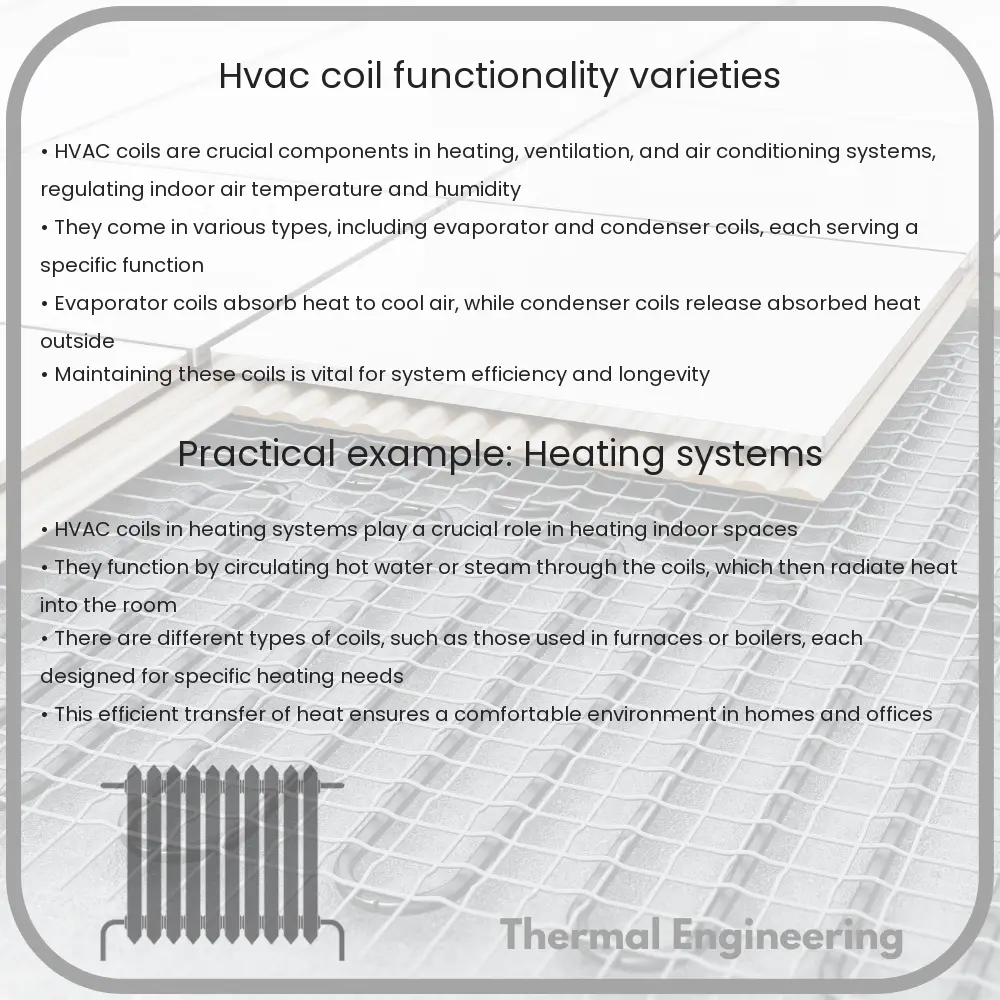Learn about the essential roles and types of HVAC coils in heating and cooling systems, ensuring optimal air quality and comfort.

Understanding HVAC Coils: Functionality and Varieties
HVAC systems, or Heating, Ventilation, and Air Conditioning systems, are crucial for maintaining indoor air quality and comfort. Central to the operation of HVAC systems are the HVAC coils, which play a vital role in heat exchange. In this article, we will explore the functionality of HVAC coils and the different types available in the market.
Functionality of HVAC Coils
HVAC coils are designed to facilitate the transfer of heat either into or out of air streams in the HVAC system. These coils come in various types, each serving a specific function:
- Evaporator Coils: These coils absorb heat from the air inside a building. The absorbed heat is then transferred to a refrigerant, which evaporates, effectively cooling the air inside the building.
- Condenser Coils: In contrast to evaporator coils, condenser coils release absorbed heat to the outside environment. This process occurs when the refrigerant gas is compressed and converted into a liquid, releasing the heat that was absorbed indoors.
Both types of coils are essential for the cooling and heating processes in climate control systems and their efficiency affects overall system performance and energy consumption.
Varieties of HVAC Coils
- Copper Coils: Known for their superior thermal conductivity, copper coils are a popular choice in HVAC systems. They also exhibit excellent resistance to corrosion, which extends the lifespan of the coils.
- Aluminum Coils: These coils are lighter and generally less expensive than copper coils. They are also highly resistant to corrosion, but their thermal conductivity is slightly lesser compared to copper.
Another differentiation in HVAC coils is based on their design:
- Slab Coils: Primarily used in small residential systems, slab coils are simple, flat, and typically only consist of a single pathway for air to move through them.
- A-Coils: Shaped like an ‘A’, these coils have a larger surface area, which makes them more efficient at heat absorption and release. They are widely used in residential and commercial HVAC systems.
- Spiral Coils: These coils are designed in a circular or spiral pattern to maximize the air contact surface area, consequently, they are very efficient in heat exchange processes.
Conclusion
The choice of coil in an HVAC system depends on factors such as energy efficiency, cost, resistance to corrosion, and space constraints. Understanding the functionality and varieties of HVAC coils can assist in choosing the right coil for specific HVAC needs, enhancing system effectiveness and economizing on energy costs.
This fundamental insight into HVAC coils not only broadens one’s understanding of how HVAC systems maintain comfortable indoor environments but also helps in making informed decisions regarding HVAC maintenance and upgrades.